Probably the most prolific non-Michigan-based golf course architect in Michigan for the last four decades has been Arthur Hills. In the 90s and early 00s, he designed several of the highest profile new public courses (Bay Harbor, Shepherd’s Hollow, Boyne Highlands) plus many country-club-for-a-days of more local reputation. Although he hasn’t designed any of the recent big name courses (he might be retired?), his courses still occupy several places on best-of lists in Michigan.
I think that these late 90s/early 00s courses are an improvement over some of the earlier ones that he did (i.e. Pheasant Run in Canton or Fieldstone in Auburn Hills). His shaping has become more subdued with less mounding around the fairways and greens. And his bunker placement and green design have created more strategic interest than on his older courses (see especially the first few holes at Boyne Highlands). But I’ve never played an Arthur Hills course that didn’t have some major issue with its routing and/or a few bad holes. Bay Harbor, Shepherd’s Hollow, and Boyne Highlands are all good and each has some excellent holes, but each kicks a few own goals and because of that, none of them makes it into my highest ranks of Michigan public courses. They’re lining up in the bottom 5 of my top 20 public courses in the state but none of them quite cracks the top 15.
That is, until I played Red Hawk, just north of Tawas, for the first time recently. I’d heard from several people that it was an excellent course and it spent several years on Golf Digest’s top 25 courses in the state and its top 100 public courses in the country. Although it has fallen off recently, I was interested to get there to see if I thought that it was the best Hills course in the state and, more importantly, if it could avoid the self-inflicted wounds from which all of the others suffer.
And with the exception of one weak point in the routing—the long drive between seven and eight—I think it does. Except for the river valley that splits the front nine, the property is excellent, with good natural contour and some outstanding trees. There are several good holes (2, 4-6, 11) and no poor ones. While I think there are a few instances of shaping around the greens that the contour of the ground made completely unnecessary (around the eighth and twelfth greens), the shaping is never intrusive and generally well-done. The property is excellent and I think that another architect could have done better, but I think that Red Hawk is Hills’ best public course in the state and it cracks my top 15.
The course gets off to a subdued, but still interesting start at the first. It’s a fairly long par 4 that gradually doglegs left around an oak tree. The angle of the green opens up from the outside of the dogleg and the approaching fairway is split into two tier—a higher (by maybe three feet) right tier that feeds onto the green and a lower left tier where the further you go, the narrower the angle onto the green and the more that you have to deal with the left green side bunker. It’s a tough but good first hole.
I think that these late 90s/early 00s courses are an improvement over some of the earlier ones that he did (i.e. Pheasant Run in Canton or Fieldstone in Auburn Hills). His shaping has become more subdued with less mounding around the fairways and greens. And his bunker placement and green design have created more strategic interest than on his older courses (see especially the first few holes at Boyne Highlands). But I’ve never played an Arthur Hills course that didn’t have some major issue with its routing and/or a few bad holes. Bay Harbor, Shepherd’s Hollow, and Boyne Highlands are all good and each has some excellent holes, but each kicks a few own goals and because of that, none of them makes it into my highest ranks of Michigan public courses. They’re lining up in the bottom 5 of my top 20 public courses in the state but none of them quite cracks the top 15.
That is, until I played Red Hawk, just north of Tawas, for the first time recently. I’d heard from several people that it was an excellent course and it spent several years on Golf Digest’s top 25 courses in the state and its top 100 public courses in the country. Although it has fallen off recently, I was interested to get there to see if I thought that it was the best Hills course in the state and, more importantly, if it could avoid the self-inflicted wounds from which all of the others suffer.
And with the exception of one weak point in the routing—the long drive between seven and eight—I think it does. Except for the river valley that splits the front nine, the property is excellent, with good natural contour and some outstanding trees. There are several good holes (2, 4-6, 11) and no poor ones. While I think there are a few instances of shaping around the greens that the contour of the ground made completely unnecessary (around the eighth and twelfth greens), the shaping is never intrusive and generally well-done. The property is excellent and I think that another architect could have done better, but I think that Red Hawk is Hills’ best public course in the state and it cracks my top 15.
The course gets off to a subdued, but still interesting start at the first. It’s a fairly long par 4 that gradually doglegs left around an oak tree. The angle of the green opens up from the outside of the dogleg and the approaching fairway is split into two tier—a higher (by maybe three feet) right tier that feeds onto the green and a lower left tier where the further you go, the narrower the angle onto the green and the more that you have to deal with the left green side bunker. It’s a tough but good first hole.
The second is a drivable par 4 and one of the best examples that I’ve seen in the state. The green is narrow and elevated over bunkers left and right and actually slopes front-to-back—which is a rarity on an Arthur Hills course. If you go for the green and miss wide, you have an almost-impossible up-and-down. But you still need to be careful with the lay-up. More than most drivable par 4s that I’ve seen, it’s important to leave yourself a good yardage here because the green isn’t receptive and you’ll need some check. And especially if the flag is in the front, the angle is important (left-center is best) because the green is very narrow. An excellent hole—the best short par 4 that I’ve played by Hills.
After the third, which is the obligatory northern Michigan drop shot par 3 that of course features in most of the course’s promotional material, we come to an excellent medium-length par 4. This one is a bit awkward as the hole bends gently to the left and the fairway slopes to the right. It’s wide enough not to be gimmicky, but you’ll want to play up the left because the front of the green from here is open while from the right, its partially obscured by rough.
Five is an excellent par 5, which I’ve come to realize are usually the strength of his design. He places a lot of emphasis on dramatic and interesting par 5s (7 at Bay Harbor, 13 at Boyne Highlands, most of them at Shepherd’s Hollow). To a fault because he sometimes eats up the best land with par 5s at the expense of a workable routing (the third nine at Shepherd’s Hollow is incredibly guilt of this). But this hole is over modest ground and is one of the best examples of bunker usage that I’ve seen on a Hills course—two staggered on the drive, a big one that forces a decision or a clever workaround on the lay-up, and just one in the front at the excellent green site. It’s not as flashy as the aforementioned par 5s, but it’s every bit as good.
Six is a medium length par 3 with one of the most interesting greens that I’ve seen on a Hills course—sort-of half-bowl-shaped with a low middle left and a few ridges coming in from the right. While my game was going terribly, the opening six holes are not only the best stretch that I’ve seen on a Hills course in Michigan, they’re one of the better stretches on any public course in Michigan.
My enthusiasm starts to become tempered at seven, however. This is a very long par 5 and while very nice for about the first 450 yards, the choice of green site on the side of a steep hill is poor. While the shaping of the green is fine given the site that they chose, there were much better choice short and right. This also would have made the routing a little less awkward as you wouldn’t have had to drive all the way around the fourth hole to get to the eighth.
After probably a 400 yard drive around the fourth green and over the river valley, which could have been the site of a nice uphill par 3 to complement the drop shot 3rd, we come to the long, dogleg left par 4 eighth. This is a very nice hole, with a wide fairway where there’s a premium on being up the left side to open up the angle of the green. The only complaint that I have is about the small mounds around the green, which are completely pointless. They could have moved the green a few yards back and right and done no shaping at all.
Nine, a medium-short par 4 is probably my least favorite hole. Unless you hit it right in the middle of the fairway, you have to go over or kick a field goal between two large oak trees. Ten is a long par four along a right-to-left slope with a pond on the left for the last 70 yards. There’s plenty of room to run the ball onto the green from the right and the fairway contours help with this.
Eleven is another excellent par 5, doglegging first left than right. Again, there’s plenty of fairway to the right, but this makes the approach much longer. Like at the first, the fairway splits into two tiers on the approach, with a lower right side that leaves a semi-blind approach to the green and a high-left that leaves an open one. You can run a ball up to the green on the left side if you’ve hit a long drive but there’s still a strong premium on laying-up to the left.
The next two holes, a par 3 over a marsh and a medium length par 4 over flat ground are modest, although the shaping around the latter’s green is simple and well-done. The fourteenth is a very difficult medium-long par 3 with a green similar to the second—narrow and sloping front-to-back. A miss wide here leaves a very difficult recovery shot. Best to play to the back of the green, which is its widest area.
Fifteen is a very nice medium-length par 4 where carrying the fairway bunker on the right leaves you the best view of the green. An approach from the left side is deceptive because there is a rise 50 yards short of the green that makes it seem closer than it is—and there’s a hidden bunker on the far side of the mound.
My other least favorite hole is the par 5 sixteenth—so it’s not surprising that it’s the other hole that features in the course’s promotional material! The drive slopes right with bunkers on the left and unless you’ve hit a decent one, it’ll be hard to carry the marsh that crosses the fairway ~180-150 out from the green. The green is carved into a big hill and while it’s an attractive setting (the white pines here are among the best I’ve seen), I prefer something more modest. It's not really a bad hole, but it's tough and a bit awkward.
The par 3 seventeenth is a good short iron shot to a small green. The eighteenth is a very tough long par 4. Swing away because unless you hit it 300 yards, you’ll stay short of the fairway bunker on the left. The approach is a good one. It looks like the green is completely fronted by bunkers but except for the one on the right, they’re at least 50 yards short and you can run the ball in from the left side of the fairway.
I think that hole-by-hole, Red Hawk is pretty clearly the best Arthur Hills public course that I’ve played in the state. It’s a strategic golf course with several excellent holes and no really bad ones. The bunker placement is good and the shaping of the bunkers and greens is mostly well-done. For my liking, it’s also only of the most beautiful pieces of land for a course in the state with nice contour and beautiful trees—that appropriately function mostly as a backdrop.
But it still has the Arthur Hills problem of not quite bringing everything together. In this case, it’s the awkward routing of the front nine. I’m almost certain that the long cart ride between the seventh and eighth could have been avoided. If they had reversed the routing of 4-7, the seventh green could have been next to the edge of the valley and the eighth could have been a par 3 back across—which we can be pretty sure would work because they already did it at the third. The probably would have had to eliminate the par 3 sixth and maybe lost one of the par 5s, but that would have been worth it. And because the rest of the course has fairly short green to tee walks, it would have made the course completely walkable.
But it still has the Arthur Hills problem of not quite bringing everything together. In this case, it’s the awkward routing of the front nine. I’m almost certain that the long cart ride between the seventh and eighth could have been avoided. If they had reversed the routing of 4-7, the seventh green could have been next to the edge of the valley and the eighth could have been a par 3 back across—which we can be pretty sure would work because they already did it at the third. The probably would have had to eliminate the par 3 sixth and maybe lost one of the par 5s, but that would have been worth it. And because the rest of the course has fairly short green to tee walks, it would have made the course completely walkable.
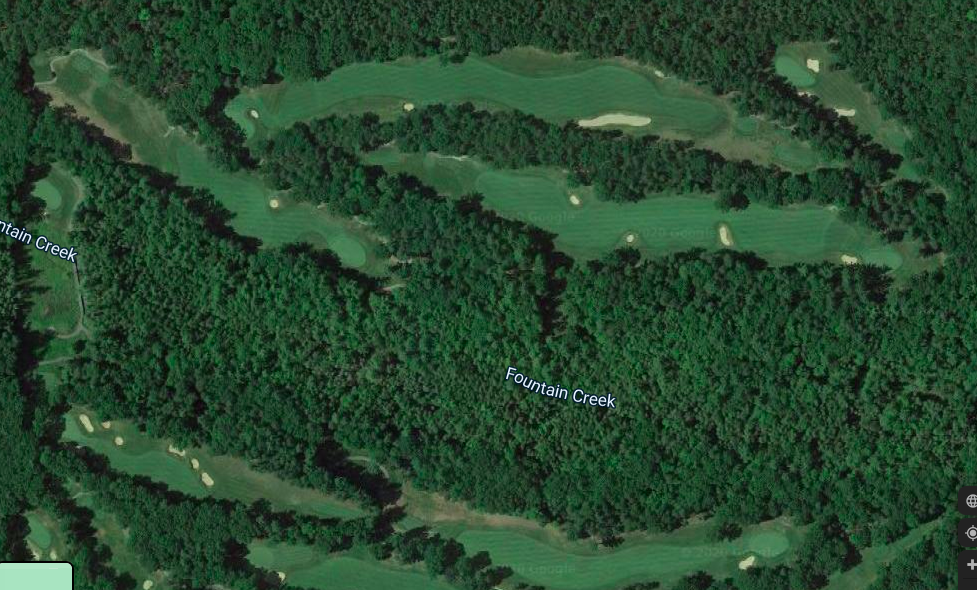
In this image from Google Maps, the fourth tee is in the top left corner of the screen. The next four holes play counterclockwise across the top of the screen, then there's a long drive from the seventh green in the top left corner to the eighth tee in the bottom center-left (the hole playing to the right on the bottom is the eighth). If you reversed the direction of the holes, you could put the sixth green near just right of the current fourth green and have the seventh play as a par 3 over the valley.
Of course no one goes on vacation to northern Michigan to walk a golf course so the routing decision was poor strictly from an architectural standpoint rather than a practical one. Still, it’s probably enough to keep Red Hawk just outside of my top 10 public courses in the state.
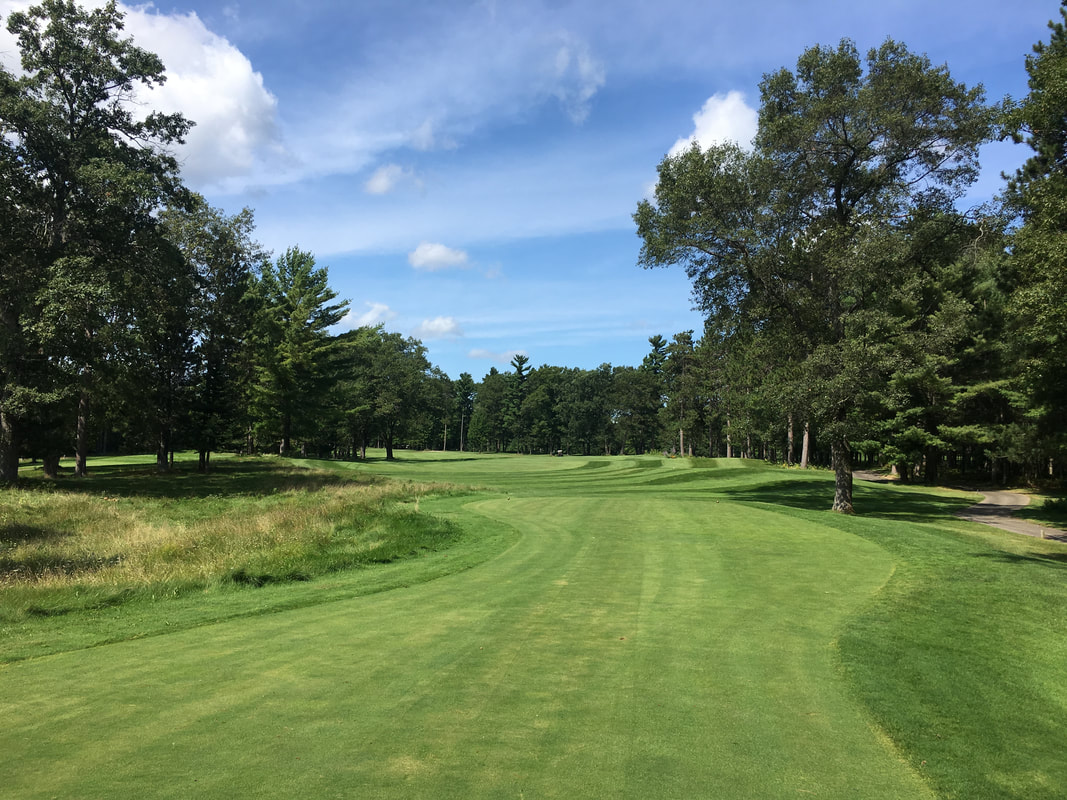
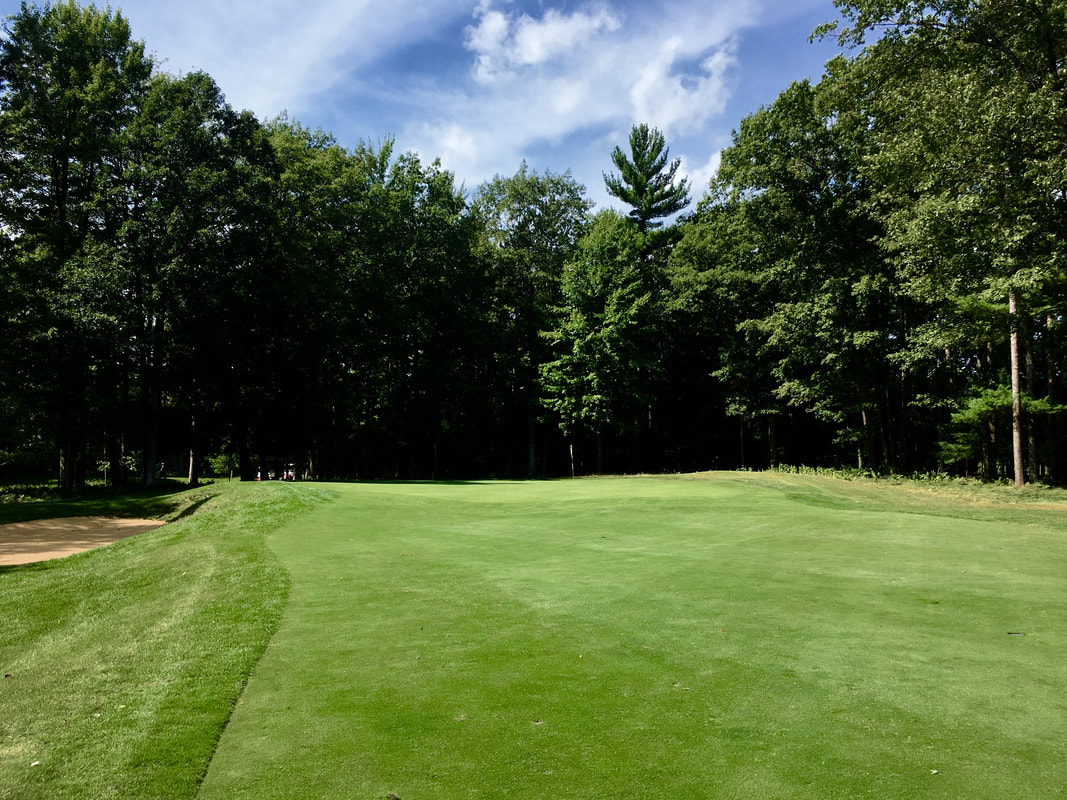
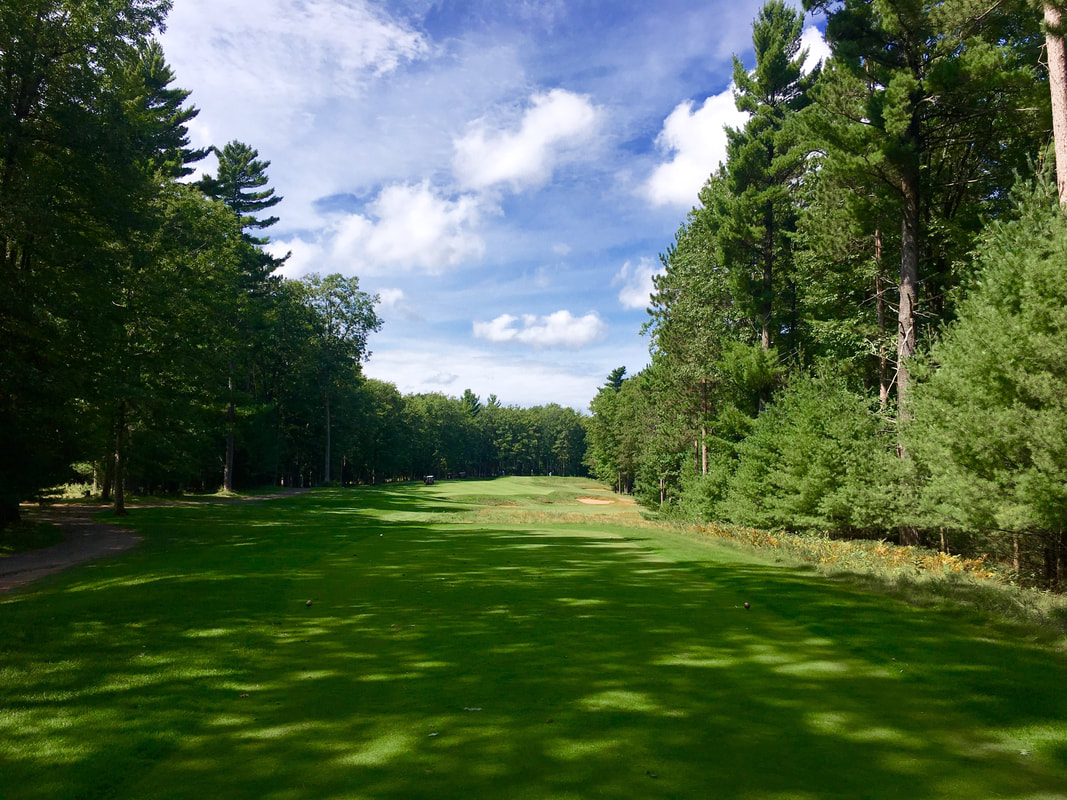
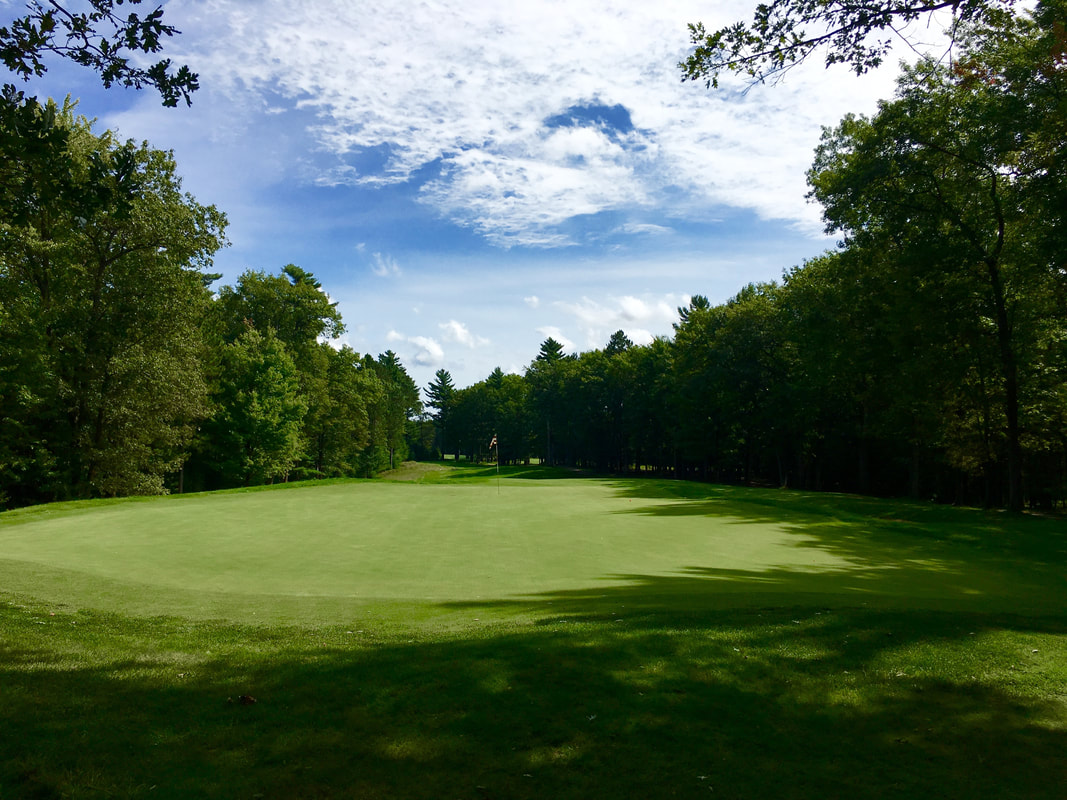

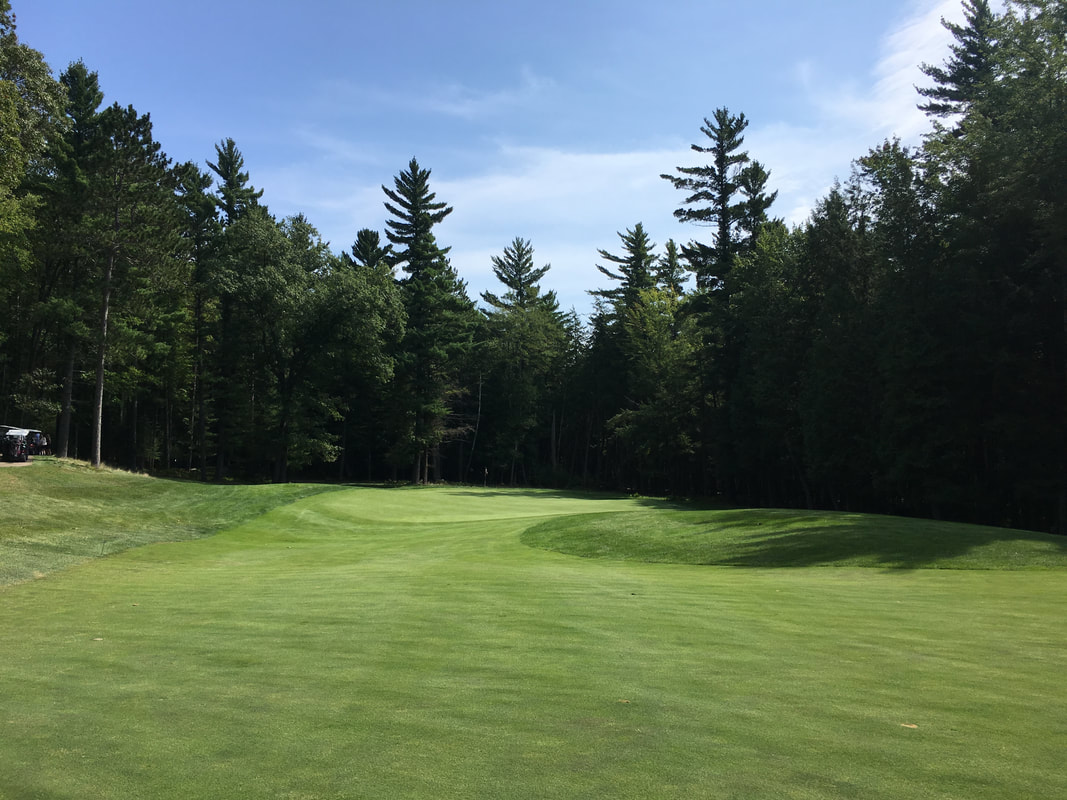
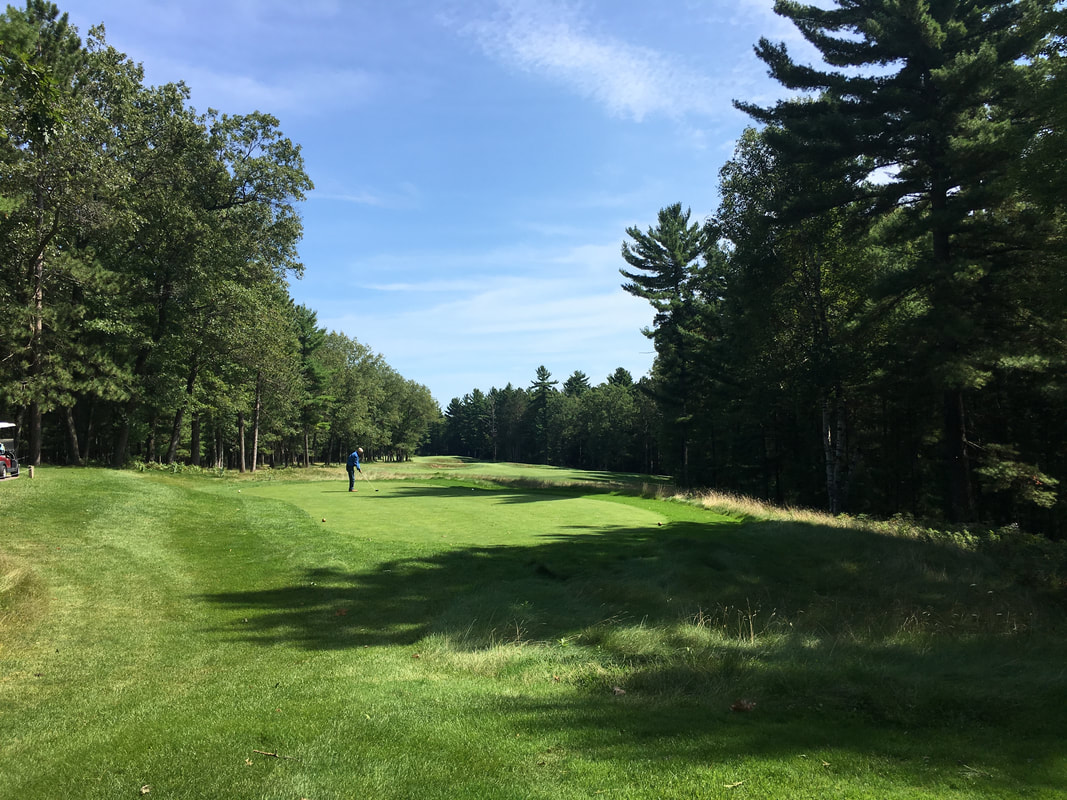
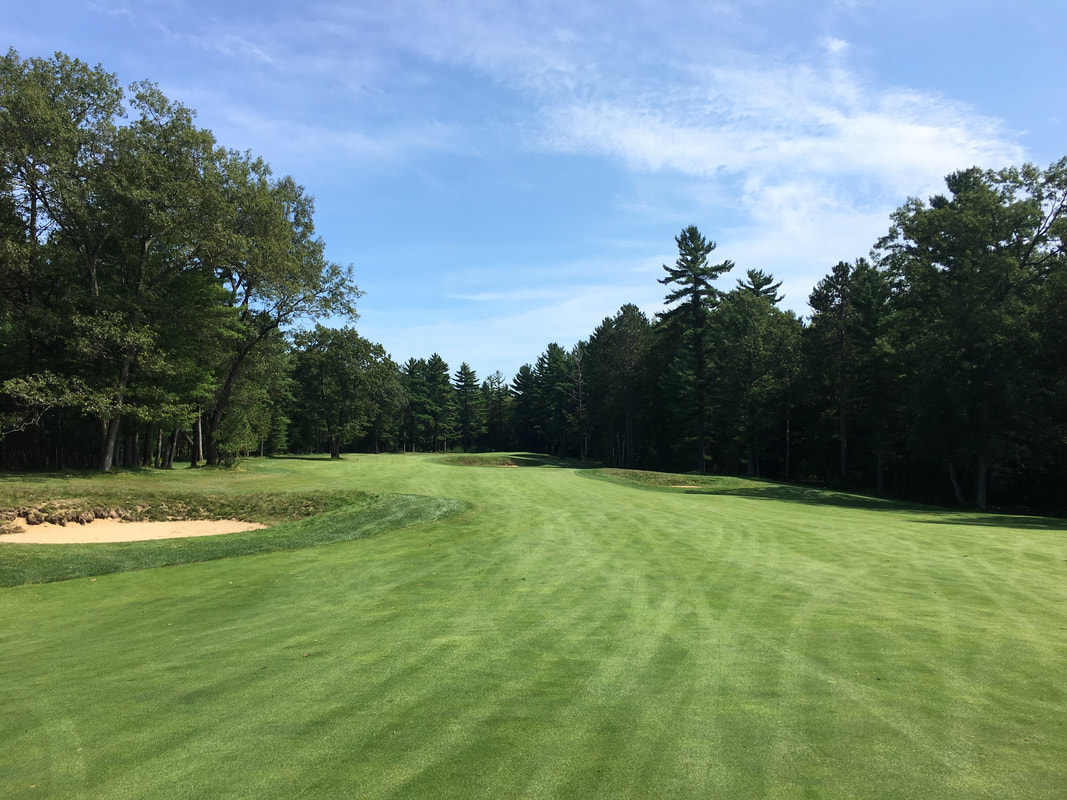
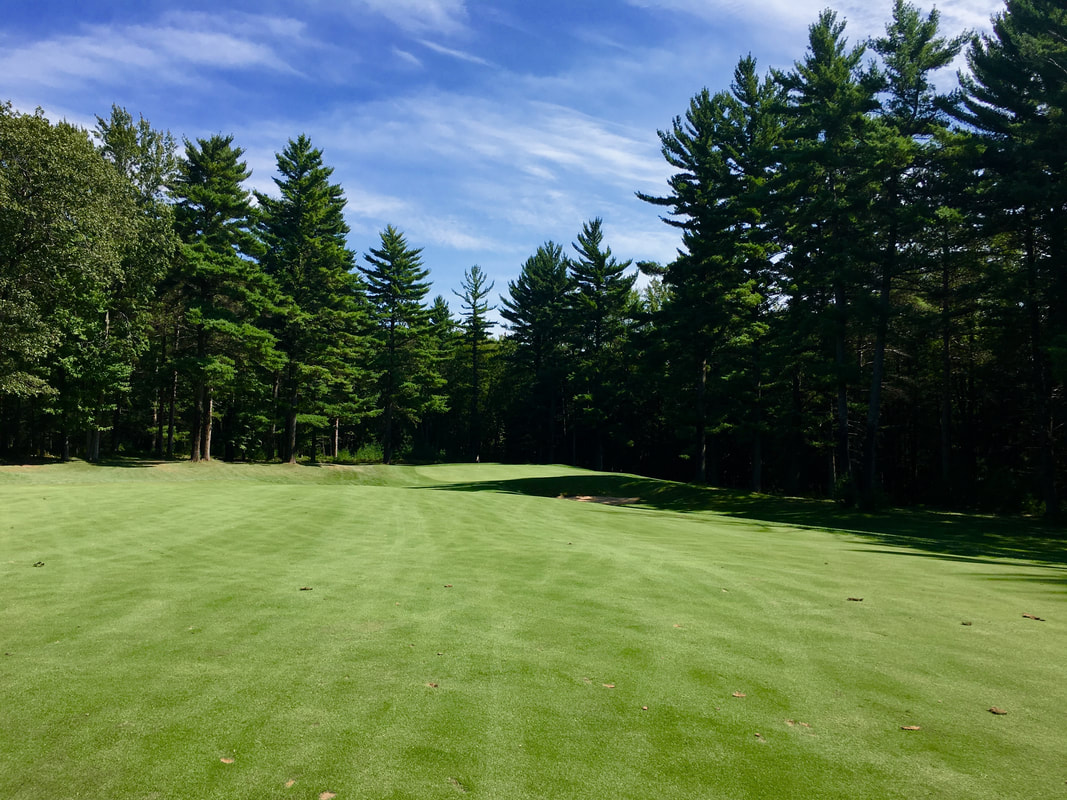
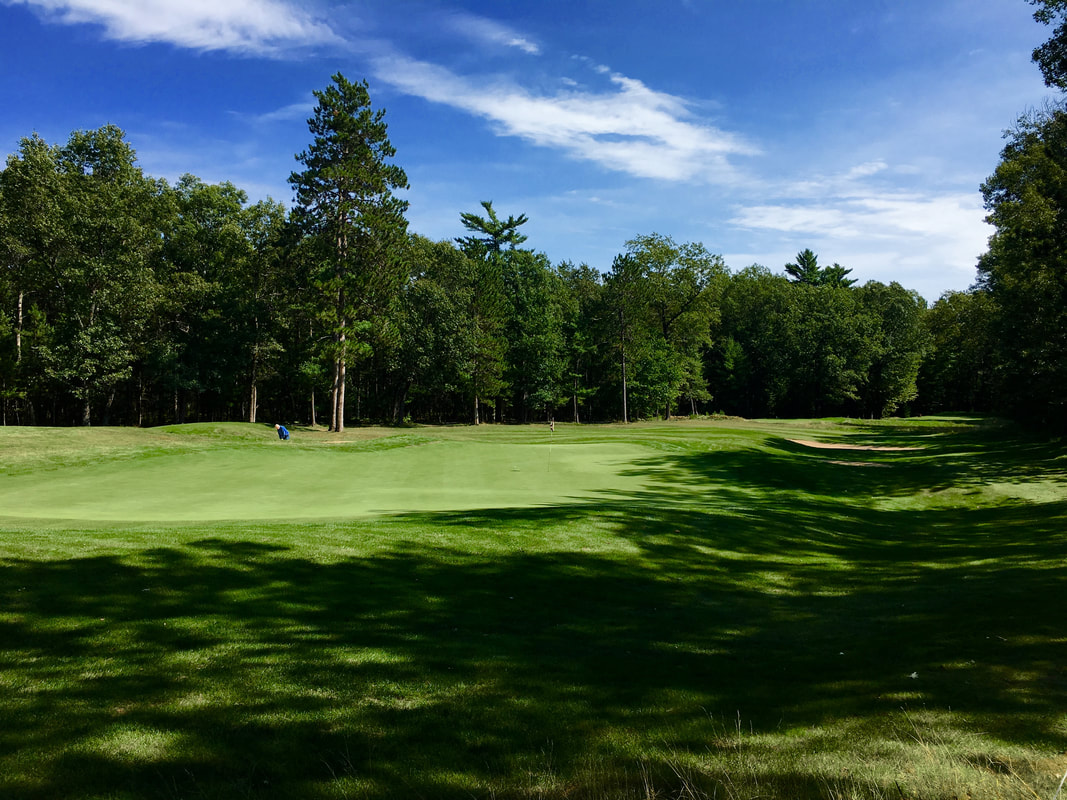
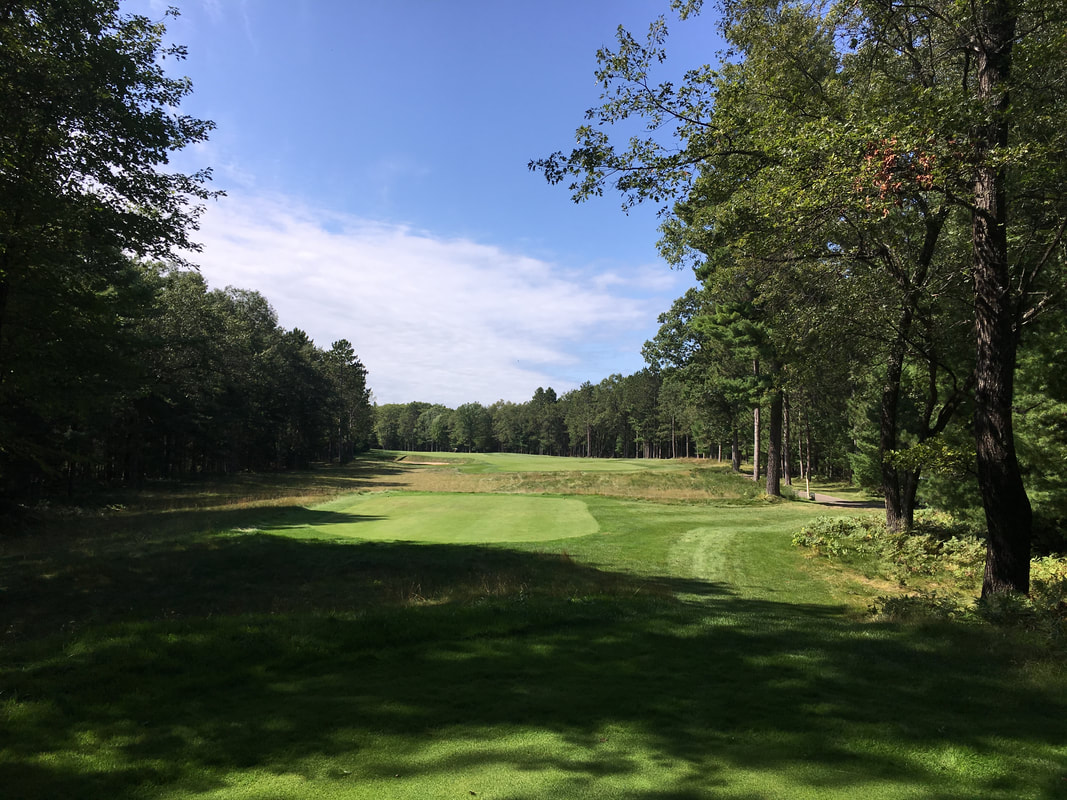
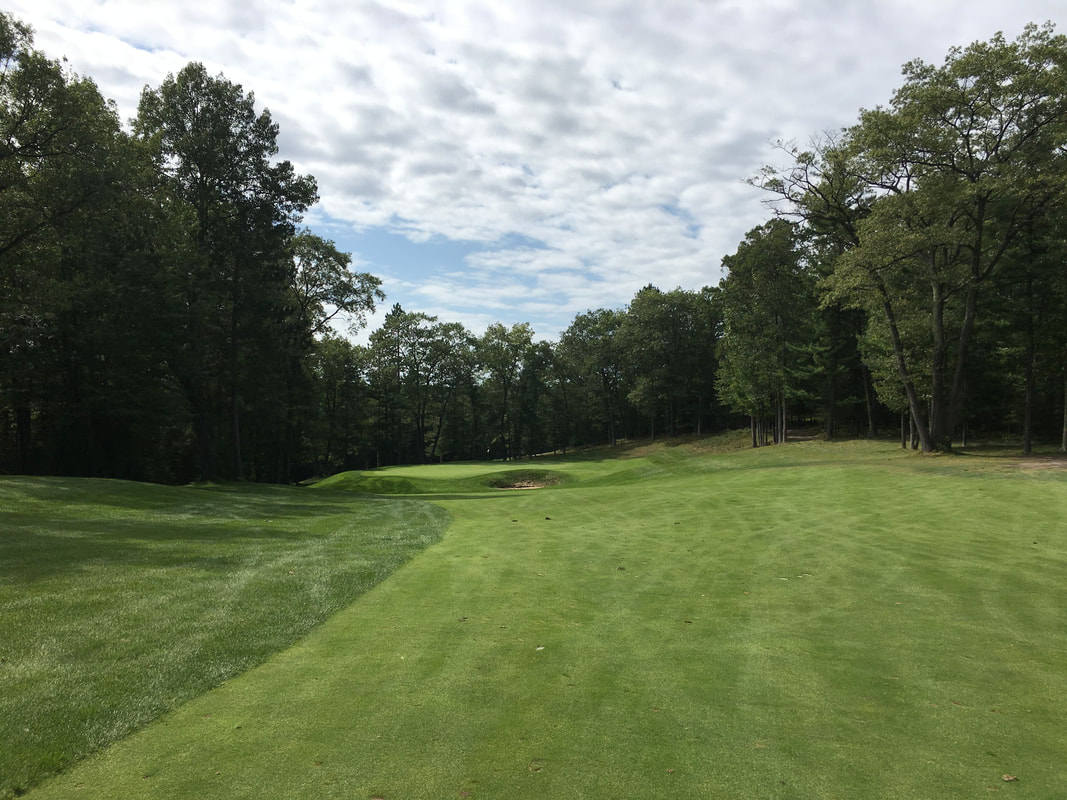
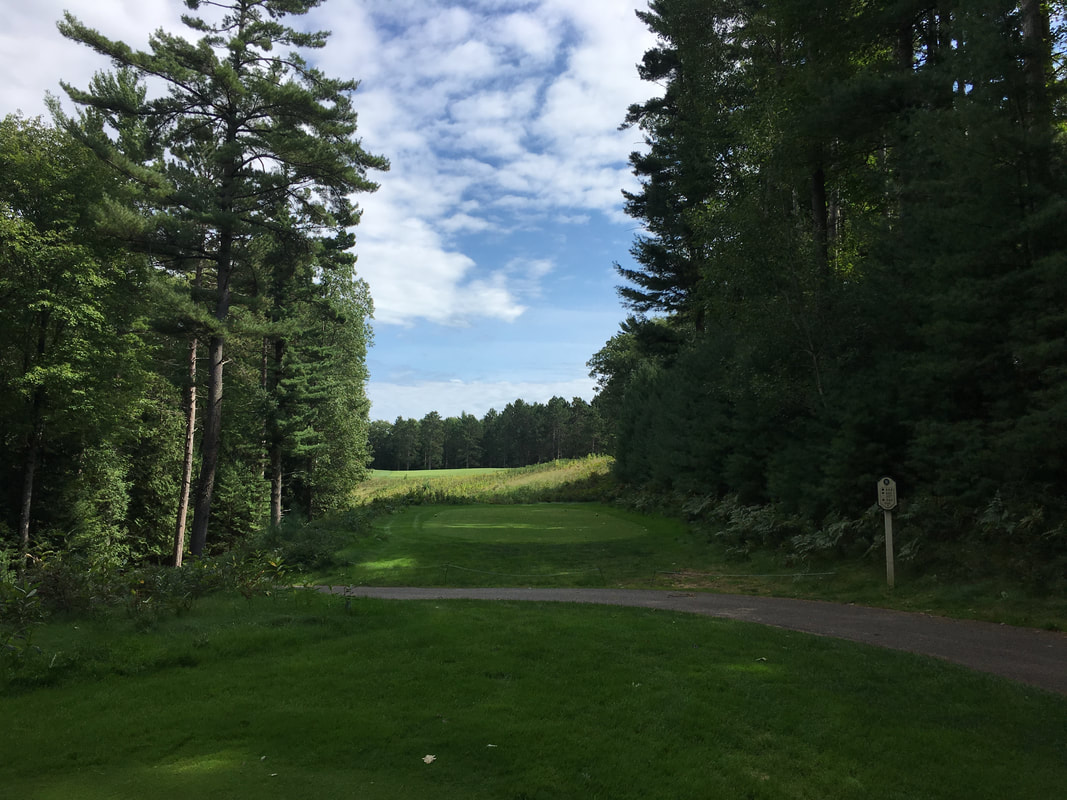
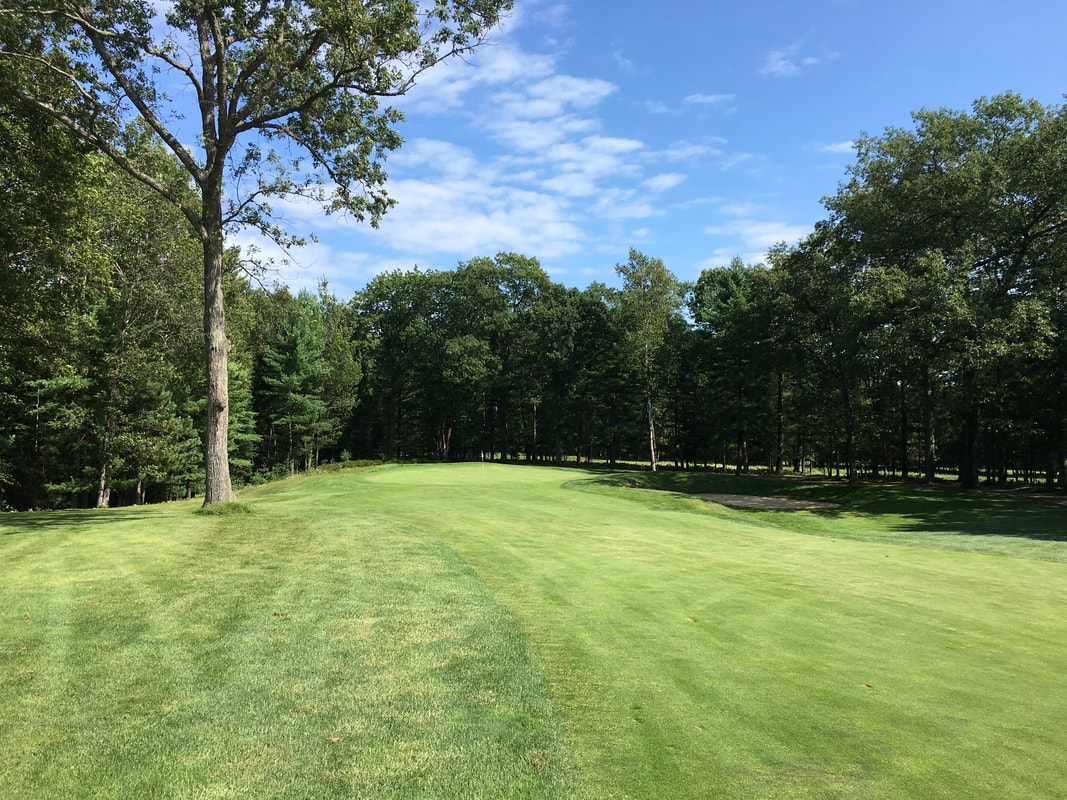
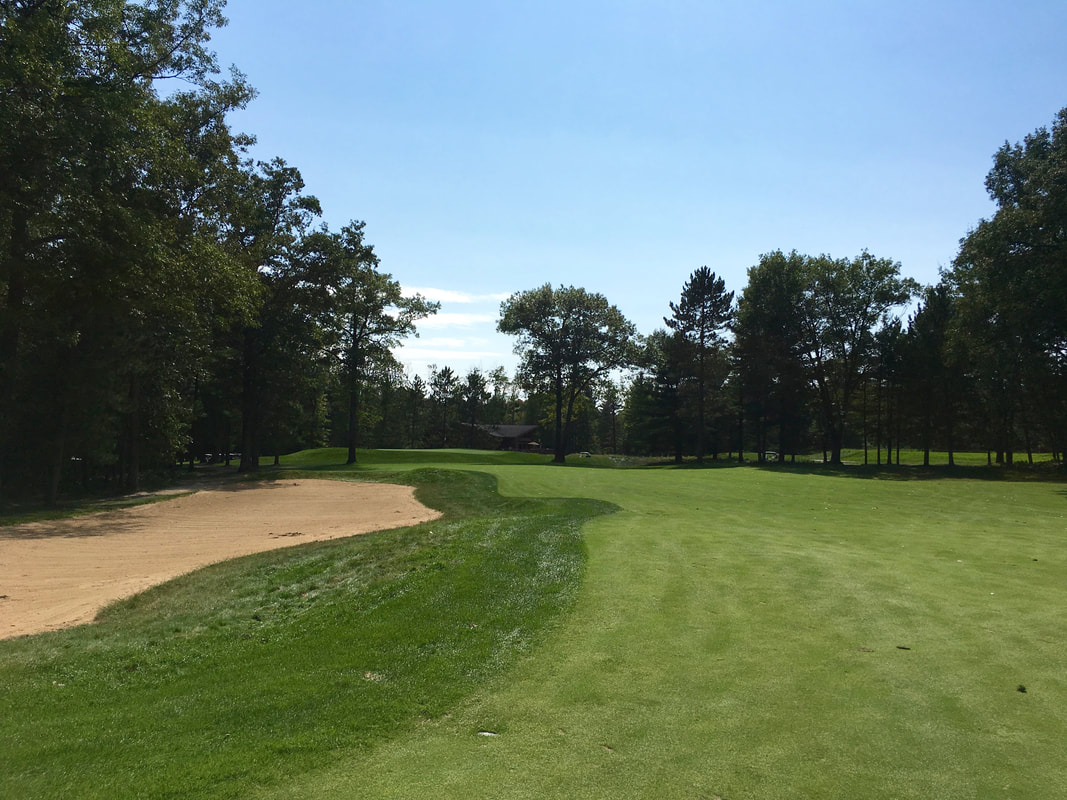
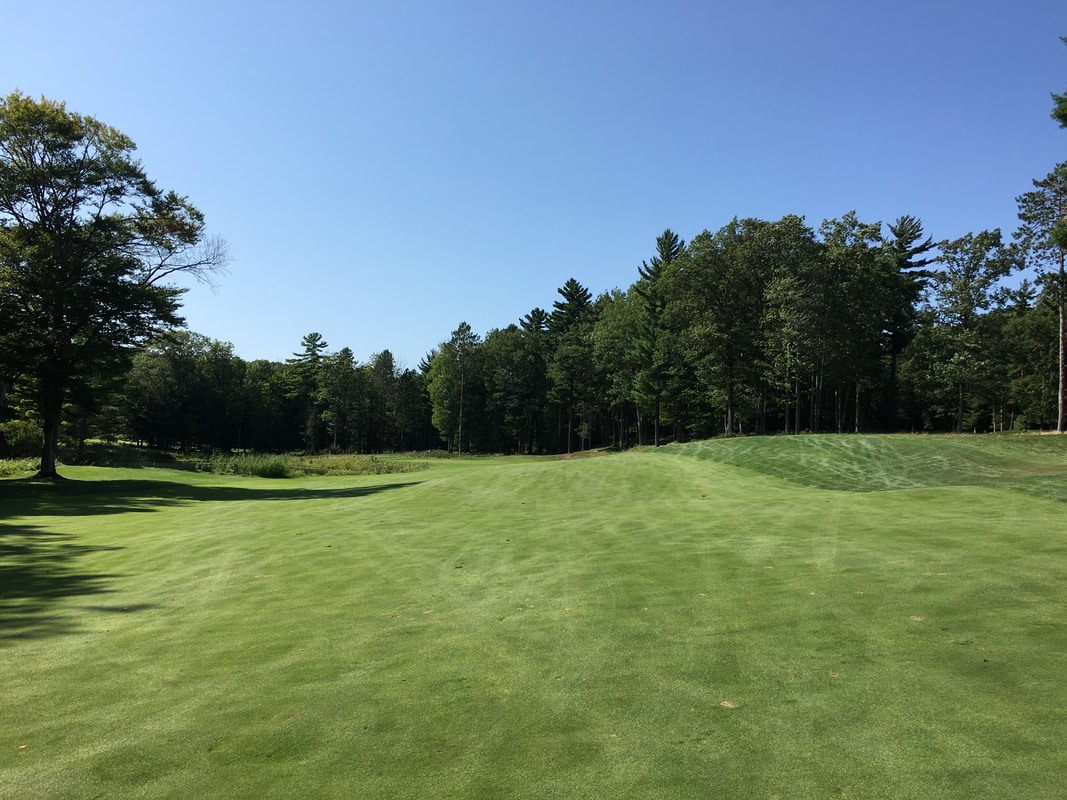
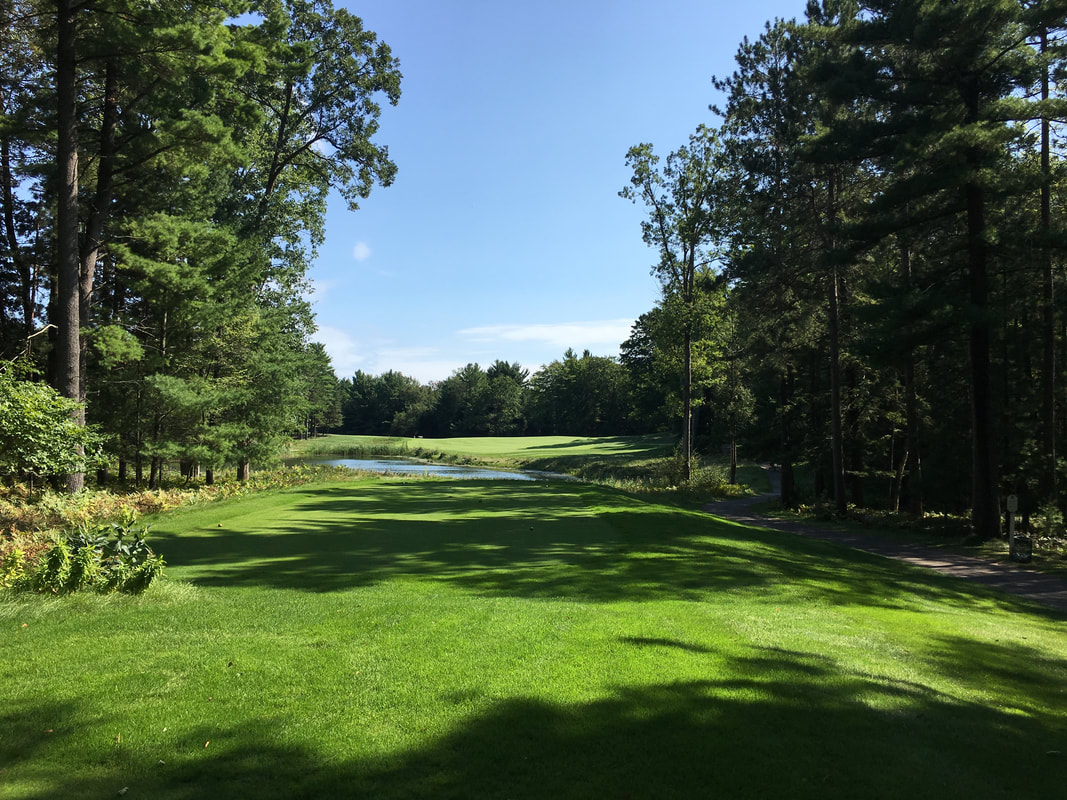
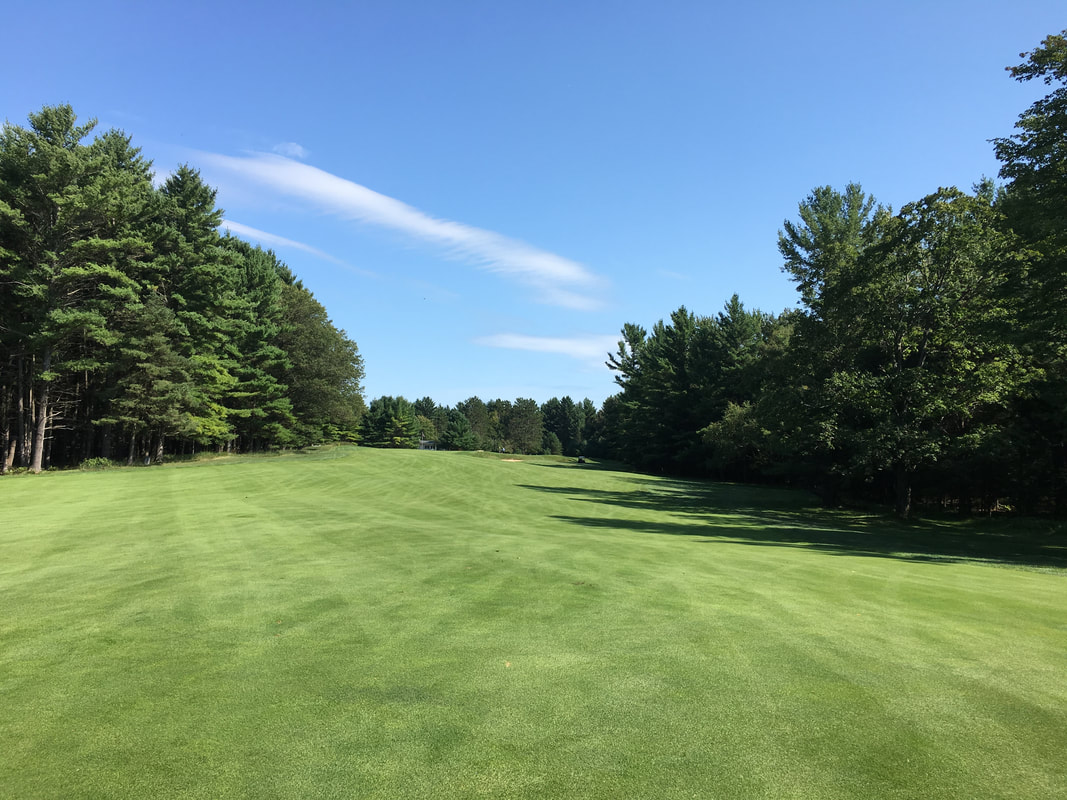
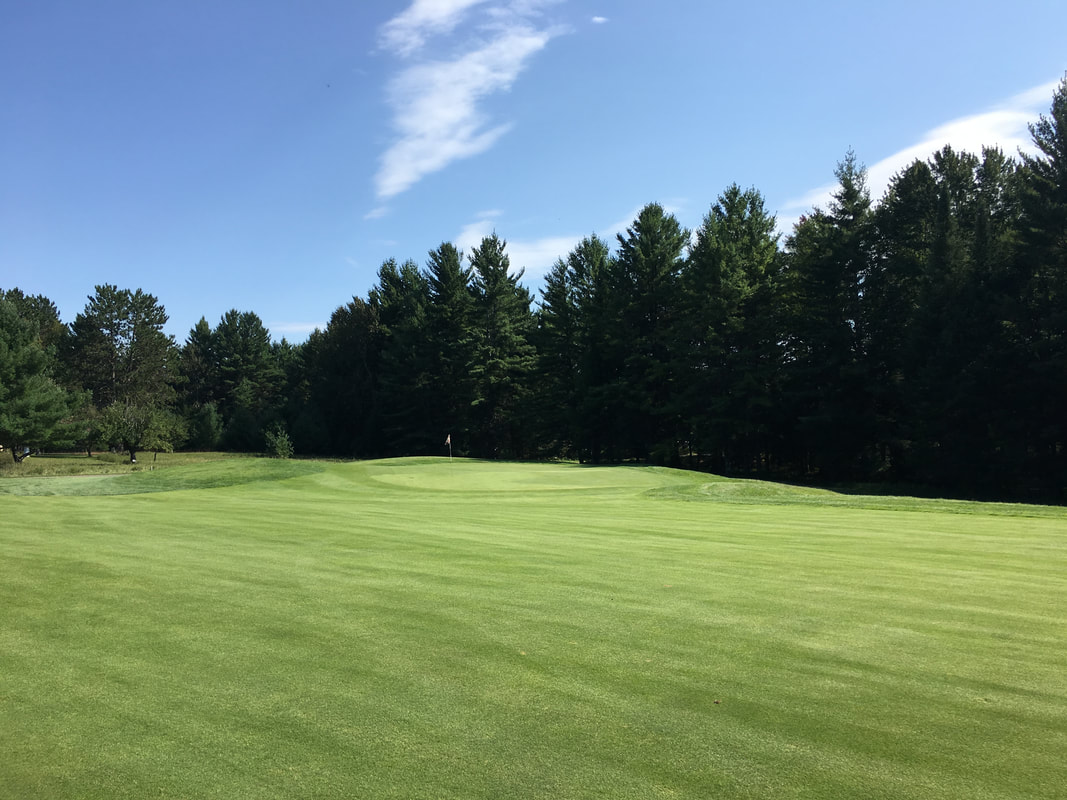
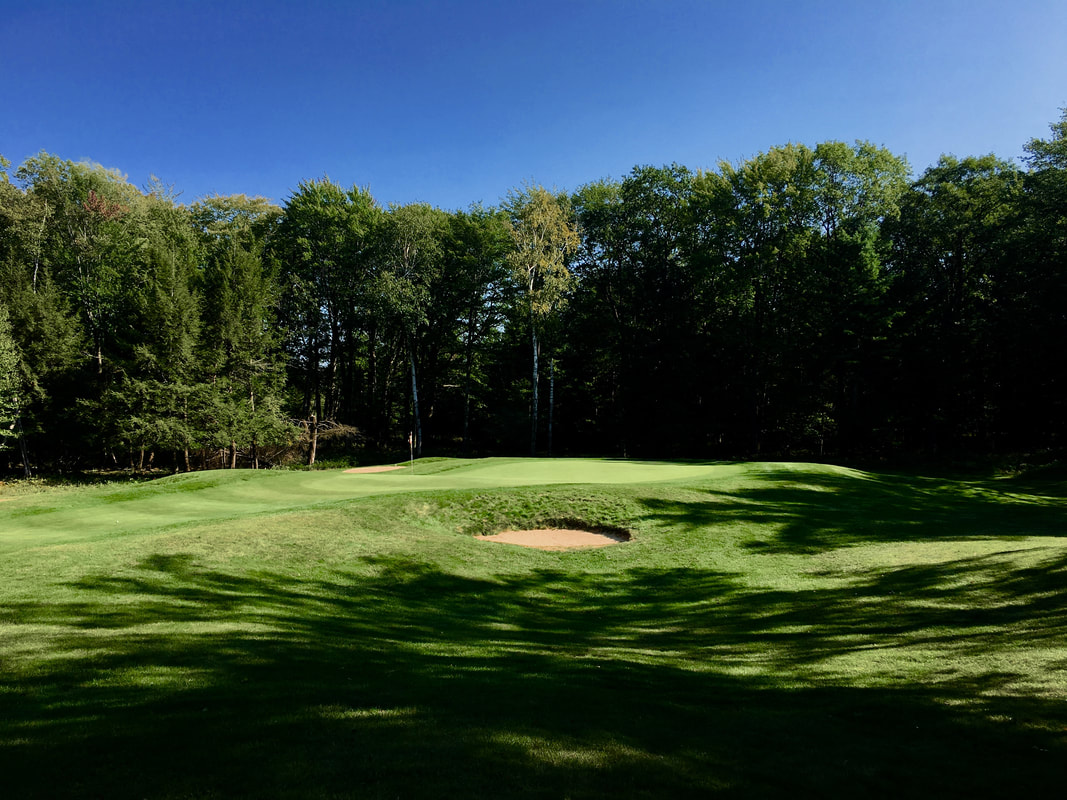
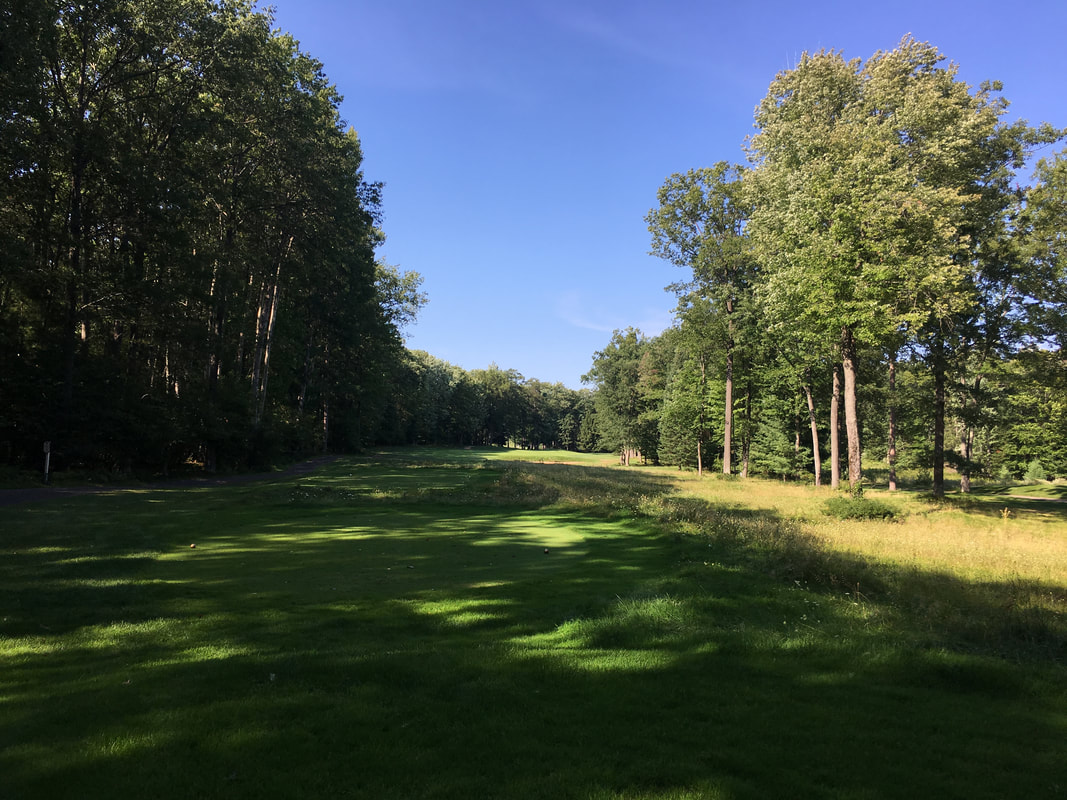
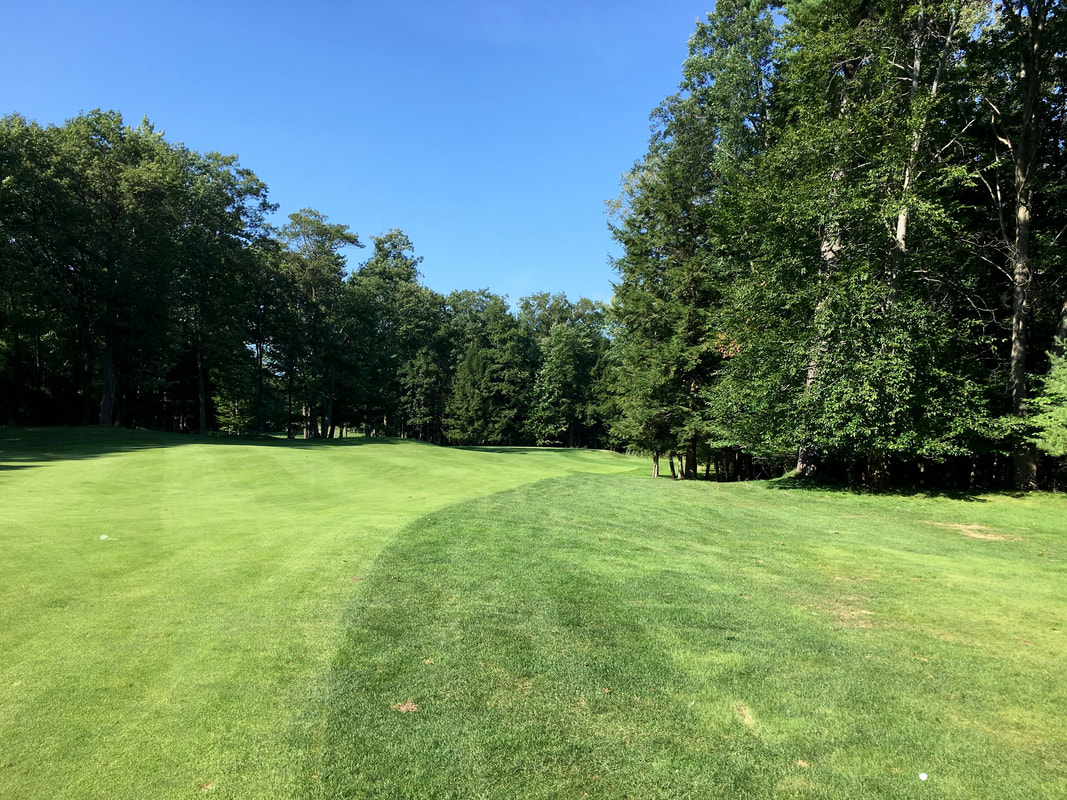
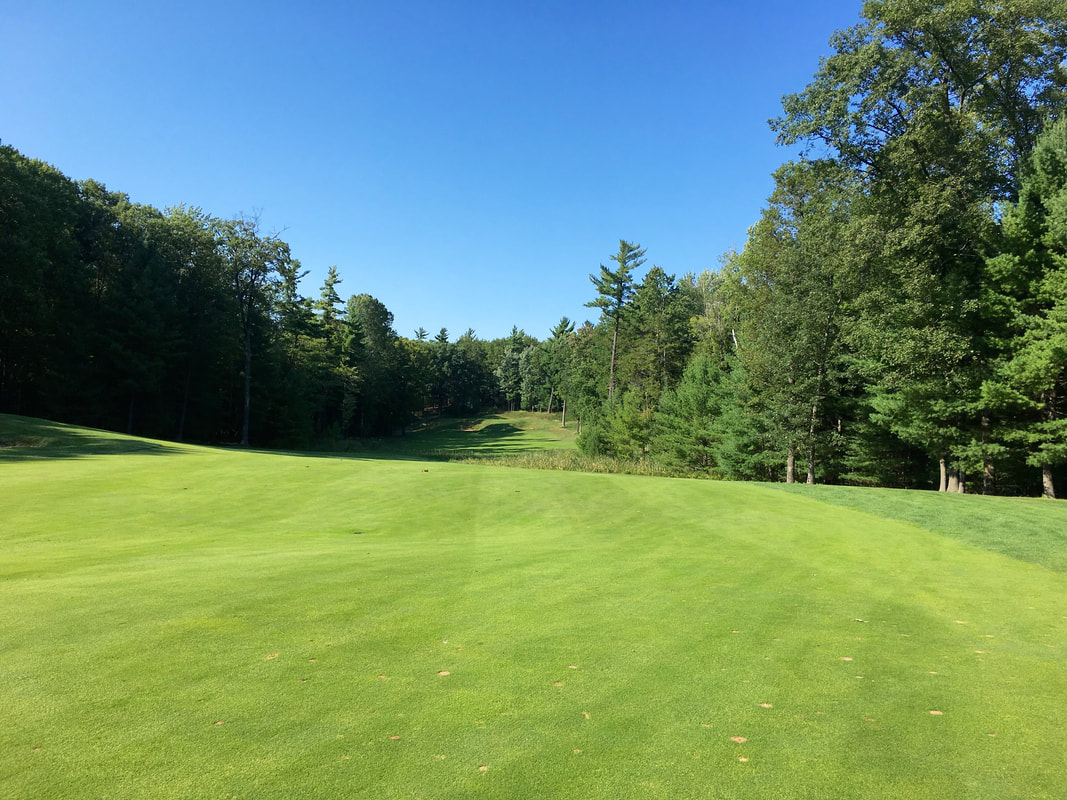
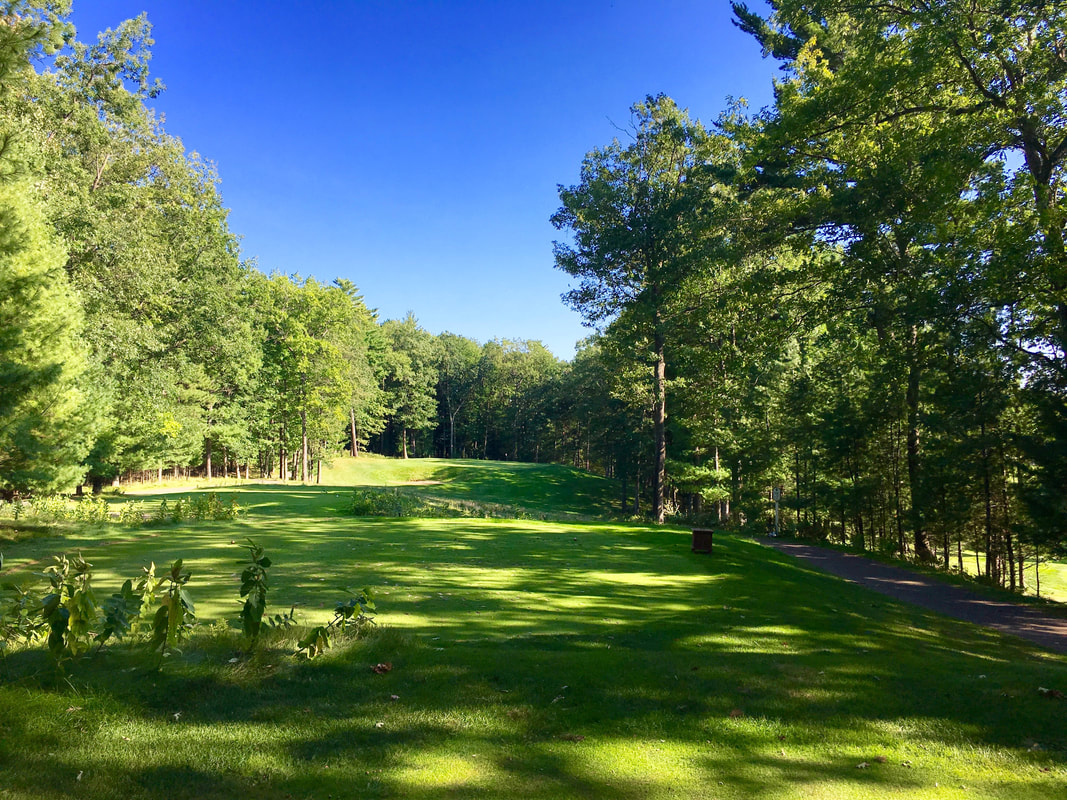
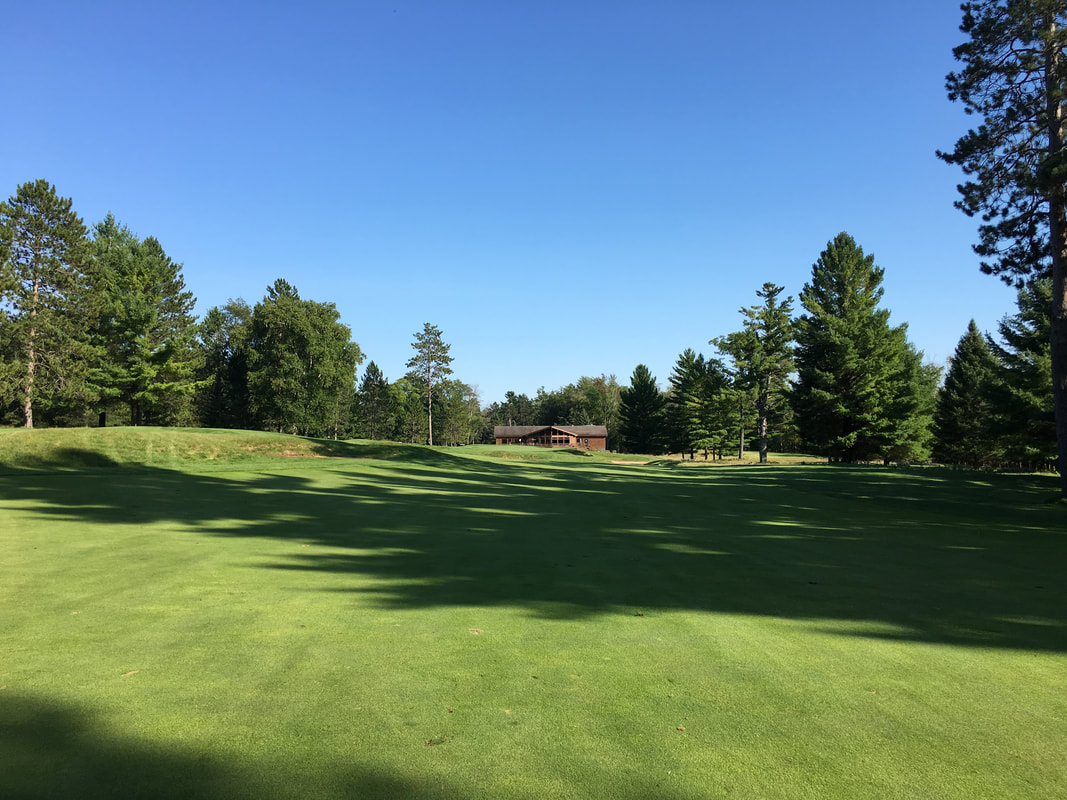
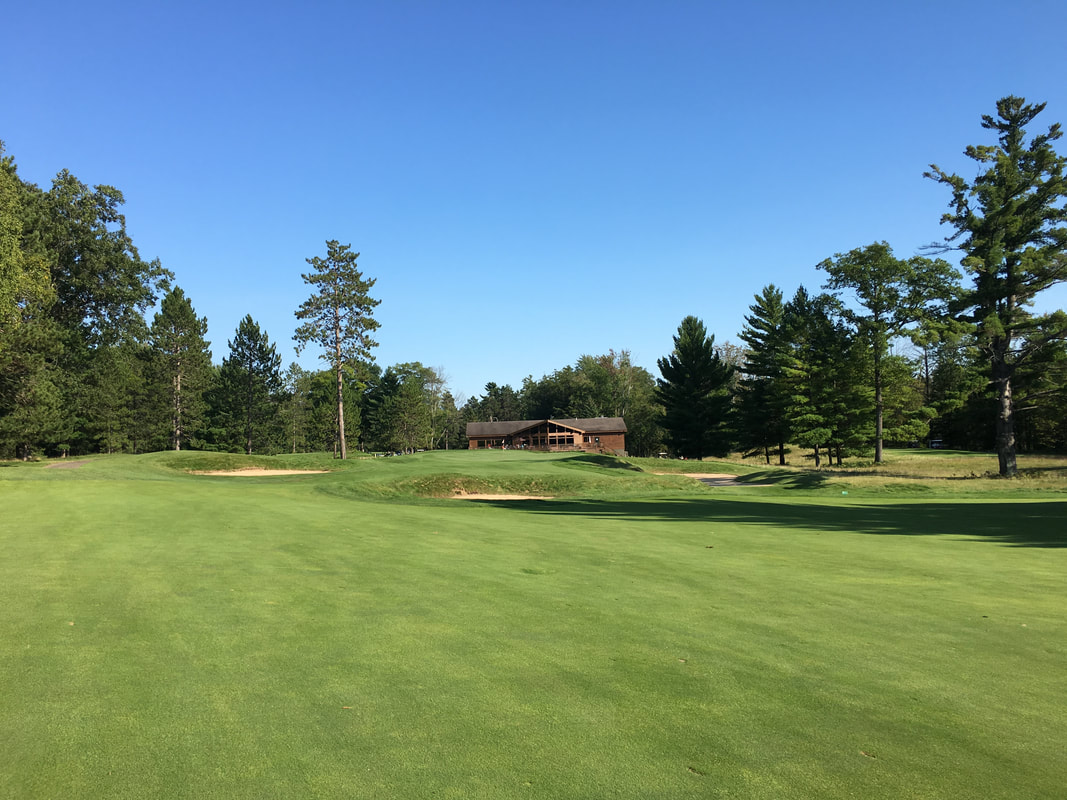
 RSS Feed
RSS Feed